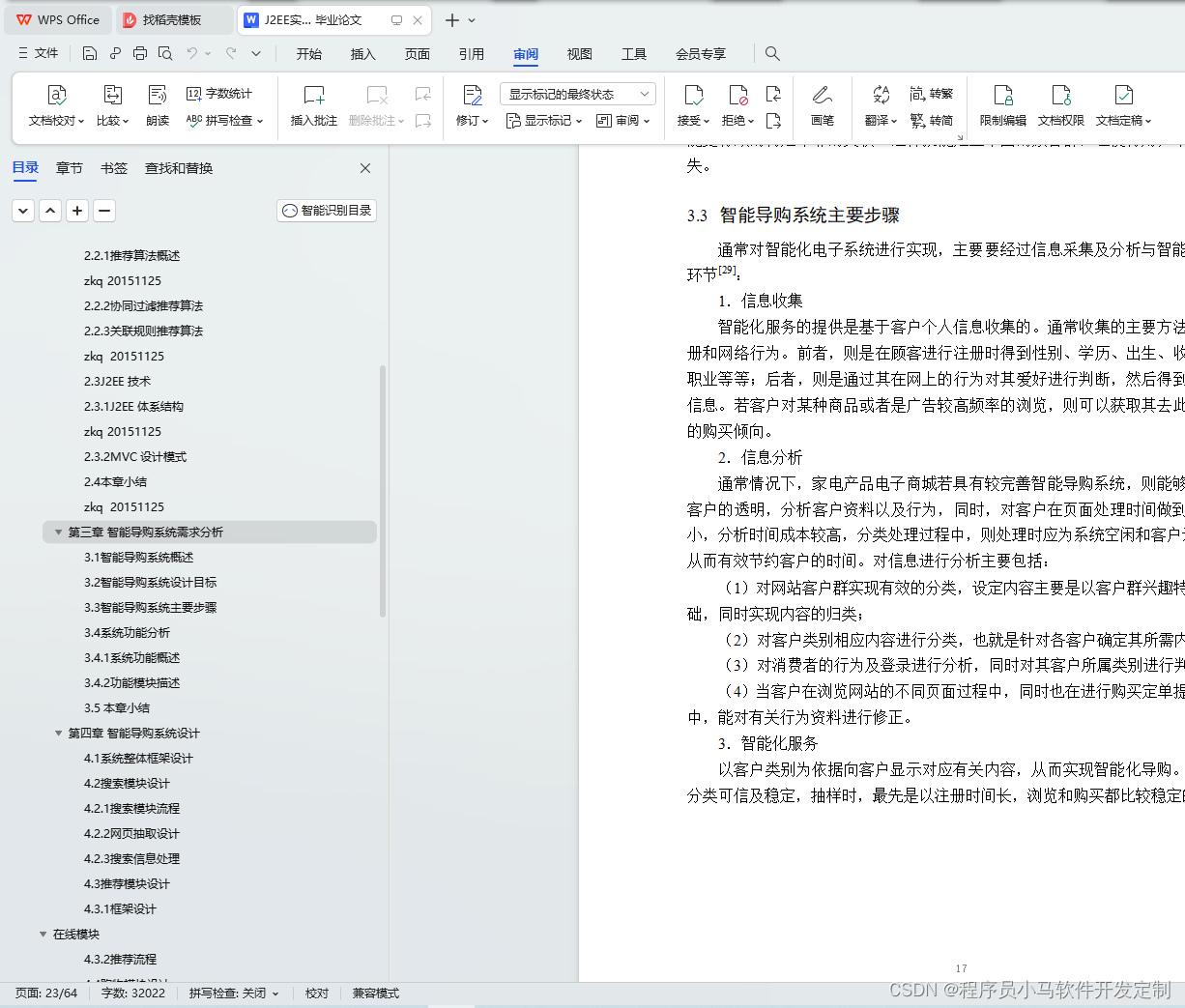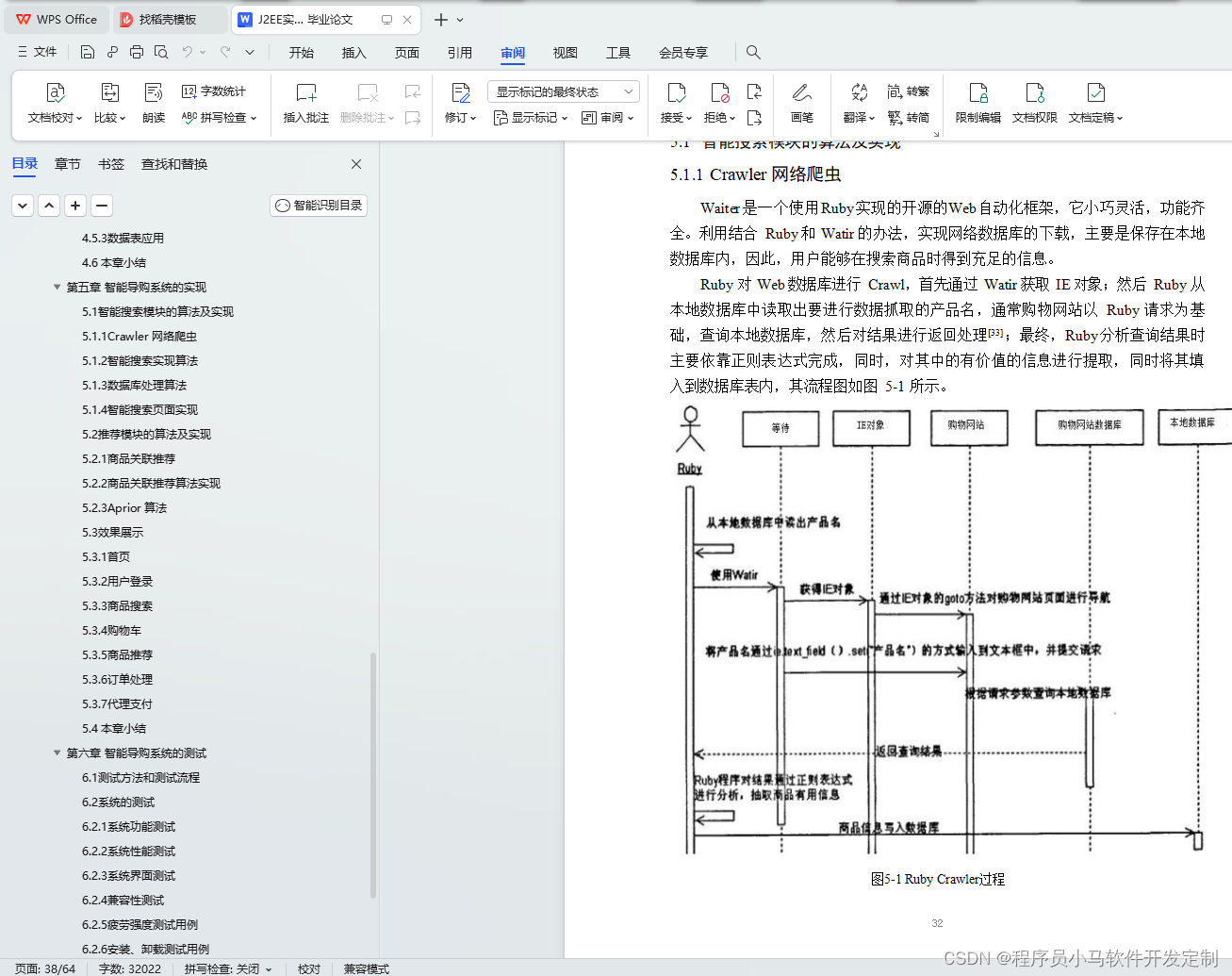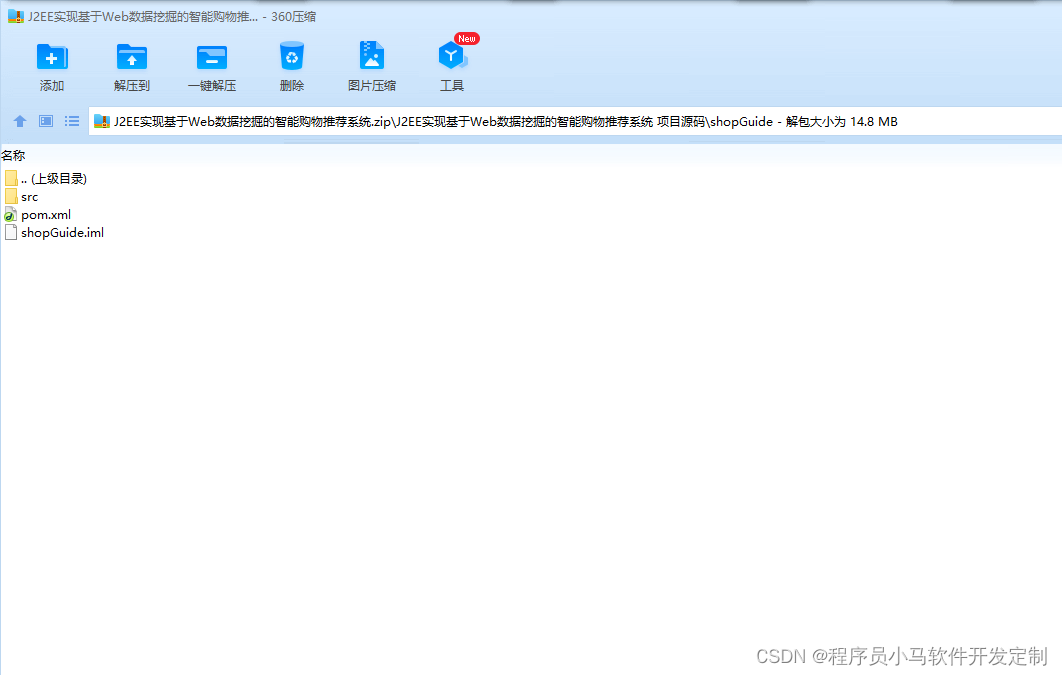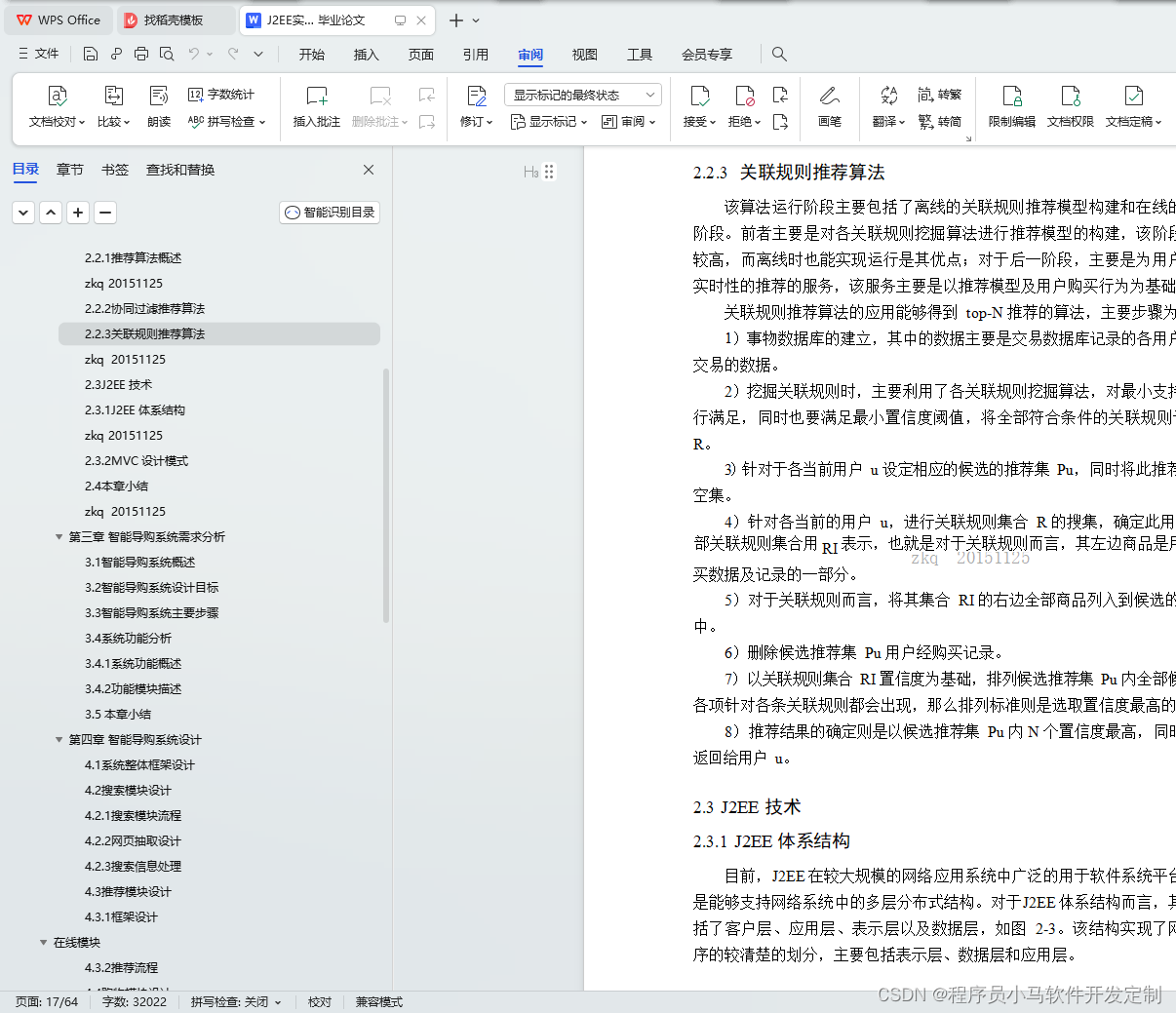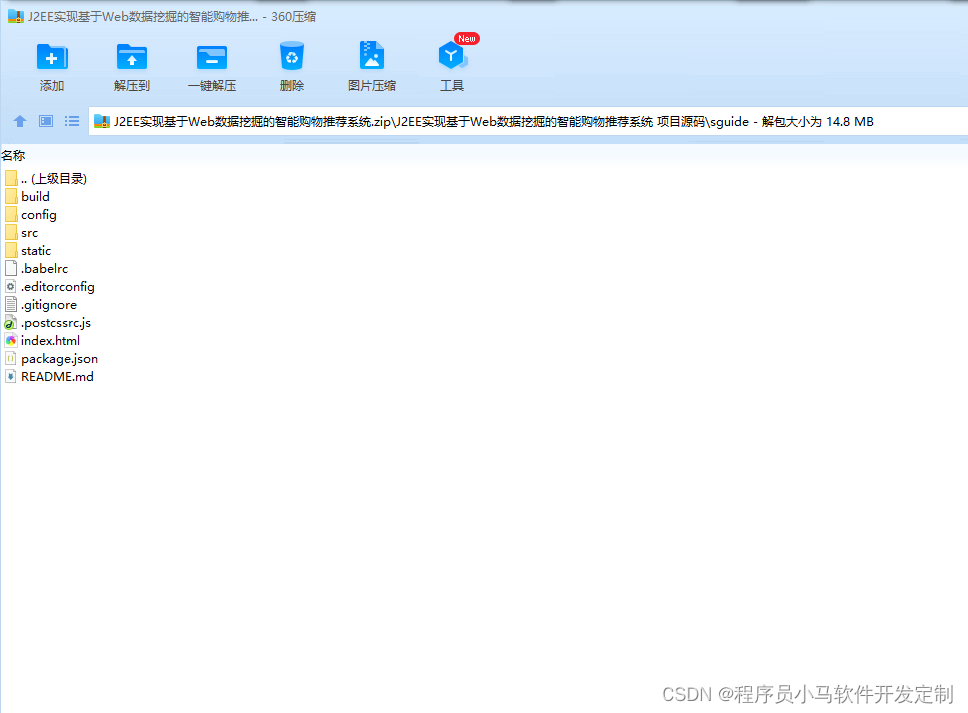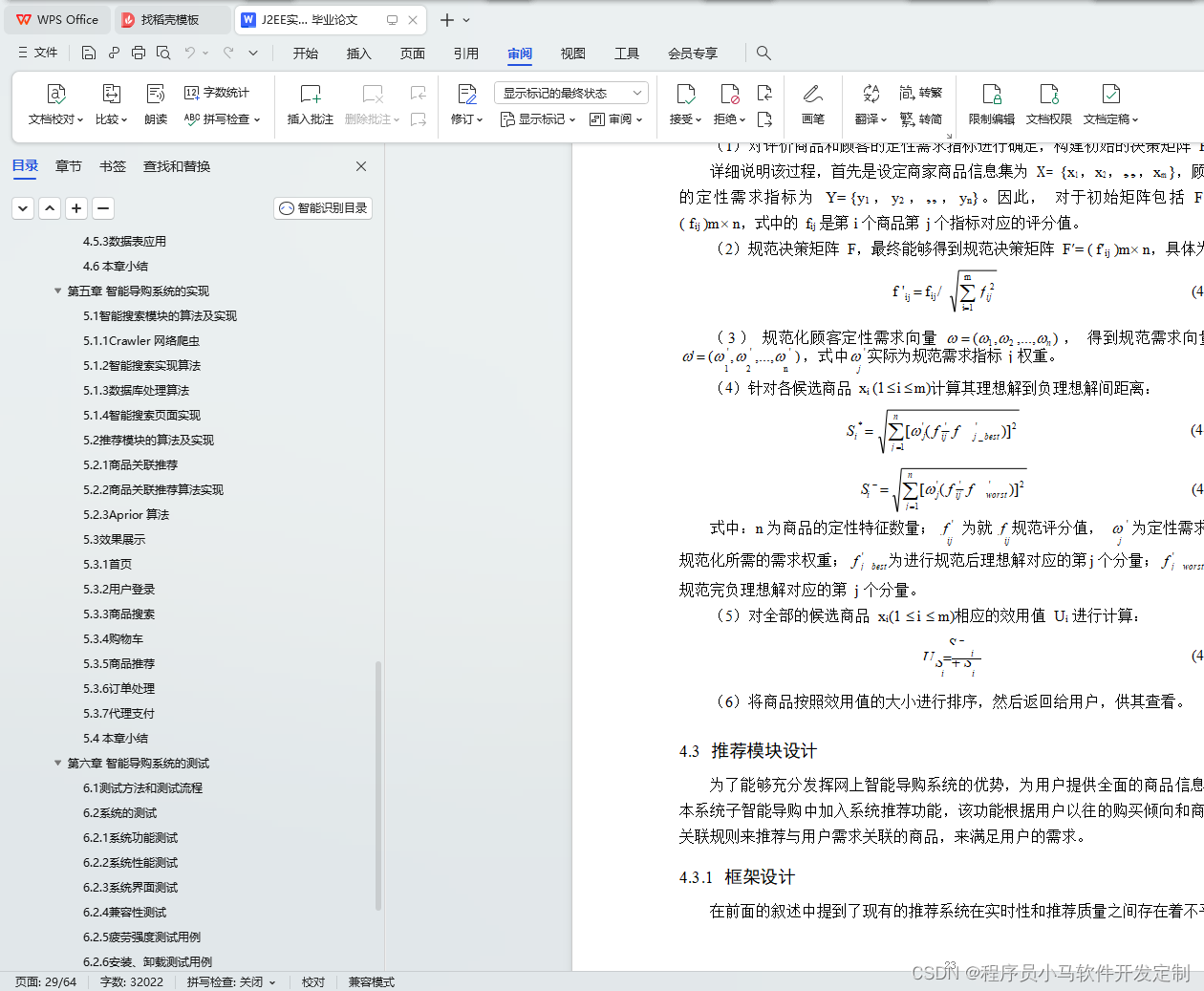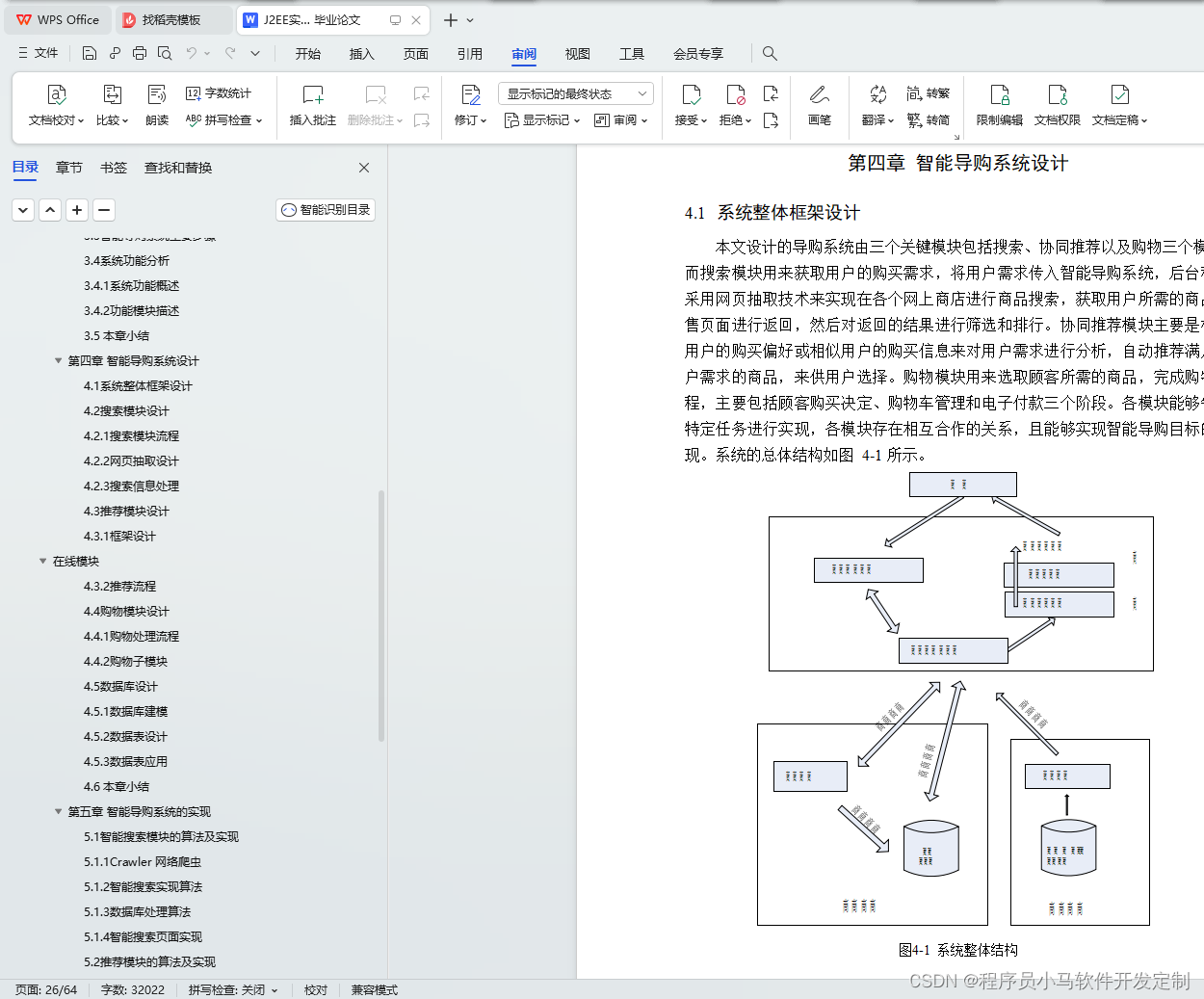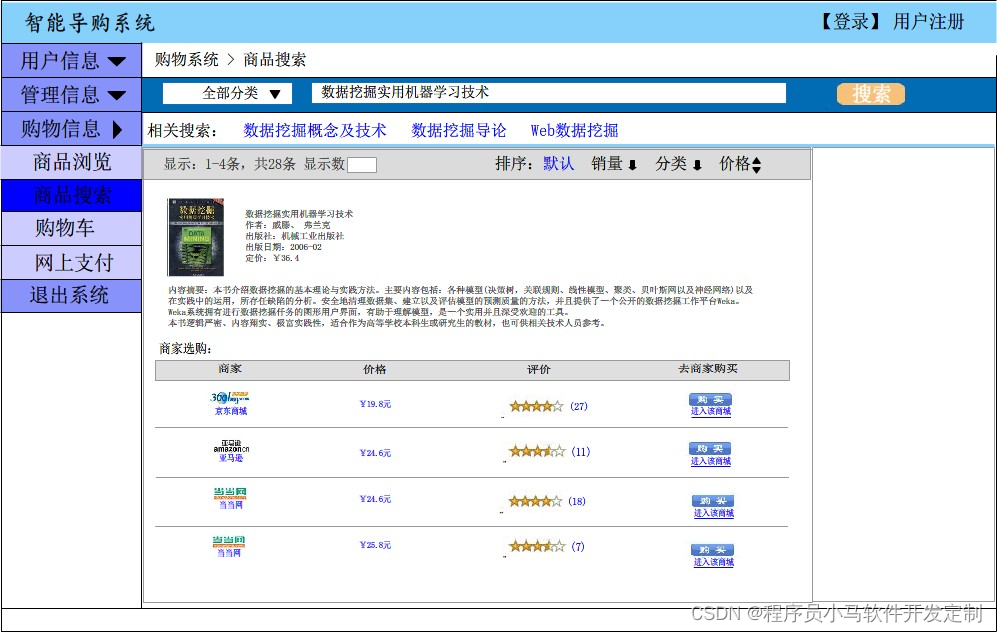摘 要
近年来,随着电子商务及 Web 服务的发展,目前利用电子网站的人数不断的扩大,销售、购物以及电子交易的行为都在网上变成了现实。而电子商务的发展也加大了消费者购得满意商品的难度,对商品信息有效的掌握也是很不容易实现的。对于消费者而言,购物过程就需要消费者对于各类商品通过浏览器进行繁琐的信息获取过程,同时,选择出最称心的商品,然后完成了电子交易。该交易在时间成本是非常大的,而收集信息的过程中,而通常浏览时会有出现很多的无关信息,这对消费者产生了消极购物心态。
本文主要的对象为消费者常购产品,基于此开发以 web 为基础的导购系统, 其中主要用的 Web 数据挖掘技术包括应用 web 实现的挖掘以及商品关联的规则等。同时,网络购物系统还综合的利用 Java 技术、MVC 模式以及 J2EE 平台。本文所做的主要工作有:
(1)详细说明导购系统,对职能的导购系统的现状以及漏洞进行分析,确定了研究工作的范围;
(2)为了解决现有网上商店不统一的问题,为消费者提供一个统一的购物平台,本文设计了一种基于 Web 数据挖掘的智能导购系统。通过该系统用户可以搜寻到各个商家的商品信息,然后进行对比购买。
(3)针对现有的智能导购系统智能在系统推荐时实时性与推荐质量之间的平衡问题,采用两阶段推荐框架,设计了离线模块和在线模块两阶段分离处理,有效的解决了不平衡问题。
(4)在理论研究的基础上,采用 Java 技术、J2EE 平台和 MVC 模式,基于
Web 数据挖掘技术,就网上购物系统而言,进一步的研究其可行性、系统设计技术和需求以及实现方法,设计与开发了一个网上购物系统,并将其应用于网上图书的销售。
ABSTRACT
In recent years, with the development of e-commerce and Web services in the electronic website to make a purchase, sales and execution of electronic transactions, the number is significant growth. However, with the further expansion of e-commerce, consumers face a flood of product information to do shop around, preferred to buy, is not an easy things. The shopping phase of the consumers, consumers need to spend more and more time to browse through a variety of business websites, the person on the product information acquisition, and all goods were compared, and finally to conduct electronic transactions. This process is very time-consuming, and sometimes the webpage content of the document is irrelevant to the required product information, which is bound to affect consumer confidence in online shopping
Paper object for the consumer often buys the product, based on the developed Web based guide system, mainly implemented by application of Web data mining technology, including Web mining and commodity association rules, etc. Meanwhile, online shopping system is also integrated with Java technology, the MVC pattern and the J2EE platform. This major work includes:
(1) a comprehensive exposition of the shopping guide system, analyzes the current status of smart shopping guide development and lack of delimitation of the scope of the problem domain for your own research;
(2) the balance between the real-time with the recommended quality system recommendations for the current generation of smart shopping guide system intelligence, a two-stage recommendation framework designed offline module and the online module two-stage separation process, an effective solution not balance.
(3) on automatic model-based recommendation algorithm, recommended, and effectively improve the efficiency of the recommended level of consumer preferences and commodity two correlation.
(4) on the basis of theoretical studies, the use of Java technology, J2EE platform, and the MVC pattern, Web-based data mining techniques, the feasibility of online shopping system, system requirements, system design and implementation in-depth analysis, design and developed an online shopping system, and used in online book sales.
目 录
1.1 课题背景和意义 1
1.2 国内外研究现状 1
1.3 主要思路及主要内容 3
1.4 章节安排 4
2.1 WEB 数据挖掘 5
2.1.1 Web 数据挖掘概念 5
2.1.2 Web 数据挖掘的分类 5
2.1.3 Web 使用挖掘的过程 6
2.1.4 数据挖掘常用算法 8
2.2 基于数据挖掘的推荐算法 10
2.2.1 推荐算法概述 10
2.2.2 协同过滤推荐算法 10
2.2.3 关联规则推荐算法 11
2.3 J2EE 技术 11
2.3.1 J2EE 体系结构 11
2.3.2 MVC 设计模式 12
2.4 本章小结 13
3.1 智能导购系统概述 15
3.2 智能导购系统设计目标 16
3.3 智能导购系统主要步骤 17
3.4 系统功能分析 18
3.4.1 系统功能概述 18
3.4.2 功能模块描述 18
3.5 本章小结 19
4.1 系统整体框架设计 20
4.2 搜索模块设计 21
4.2.1 搜索模块流程 21
4.2.2 网页抽取设计 21
4.2.3 搜索信息处理 22
4.3 推荐模块设计 23
4.3.1 框架设计 23
4.3.2 推荐流程 24
4.4 购物模块设计 25
4.4.1 购物处理流程 25
4.4.2 购物子模块 26
4.5 数据库设计 27
4.5.1 数据库建模 27
4.5.2 数据表设计 27
4.5.3 数据表应用 30
4.6 本章小结 30
5.1 智能搜索模块的算法及实现 32
5.1.1 Crawler 网络爬虫 32
5.1.2 智能搜索实现算法 33
5.1.3 数据库处理算法 34
5.1.4 智能搜索页面实现 35
5.2 推荐模块的算法及实现 36
5.2.1 商品关联推荐 36
5.2.2 商品关联推荐算法实现 38
5.2.3 Aprior 算法 39
5.3 效果展示 41
5.3.2 用户登录 42
5.3.3 商品搜索 42
5.3.4 购物车 43
5.3.5 商品推荐 44
5.3.6 订单处理 44
5.3.7 代理支付 44
5.3 本章小结 44
6.1 测试方法和测试流程 45
6.2 系统的测试 45
6.2.1 系统功能测试 45
6.2.2 系统性能测试 49
6.2.3 系统界面测试 50
6.2.4 兼容性测试 51
6.2.5 疲劳强度测试用例 51
6.2.6 安装、卸载测试用例 52
6.2.7 测试结果 52
6.3 本章小结 53
7.1 本文总结 54
7.2 下一步研究展望 54
